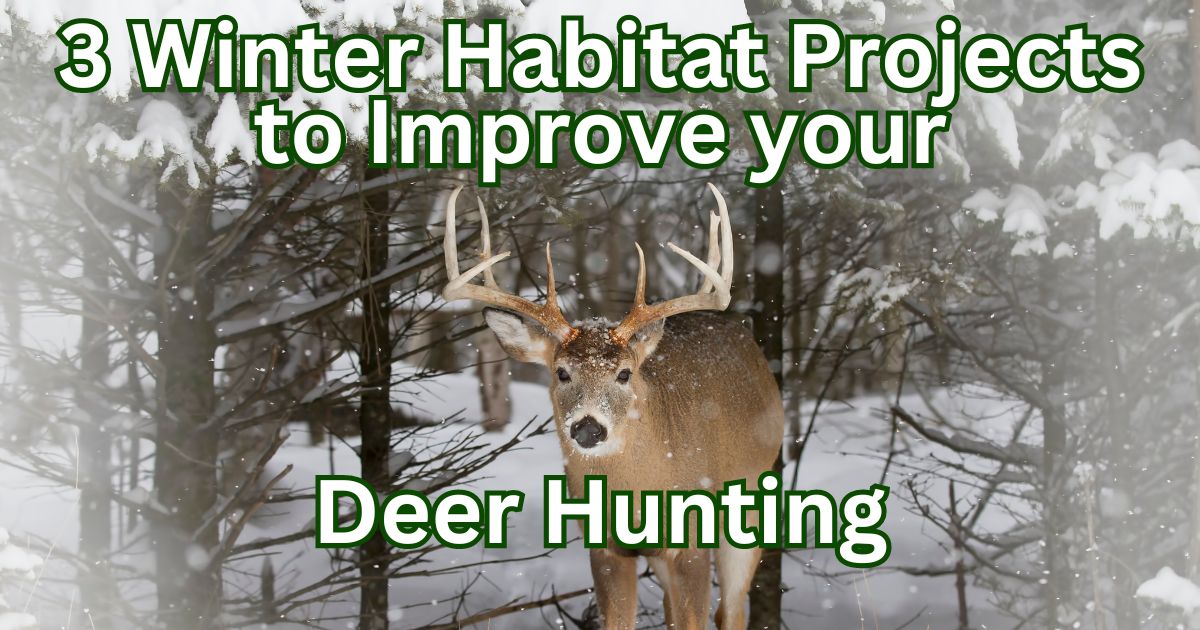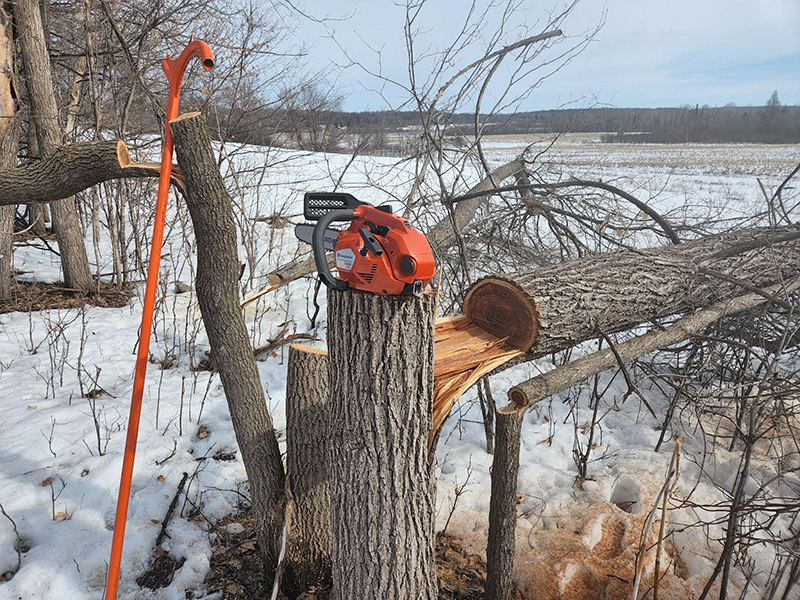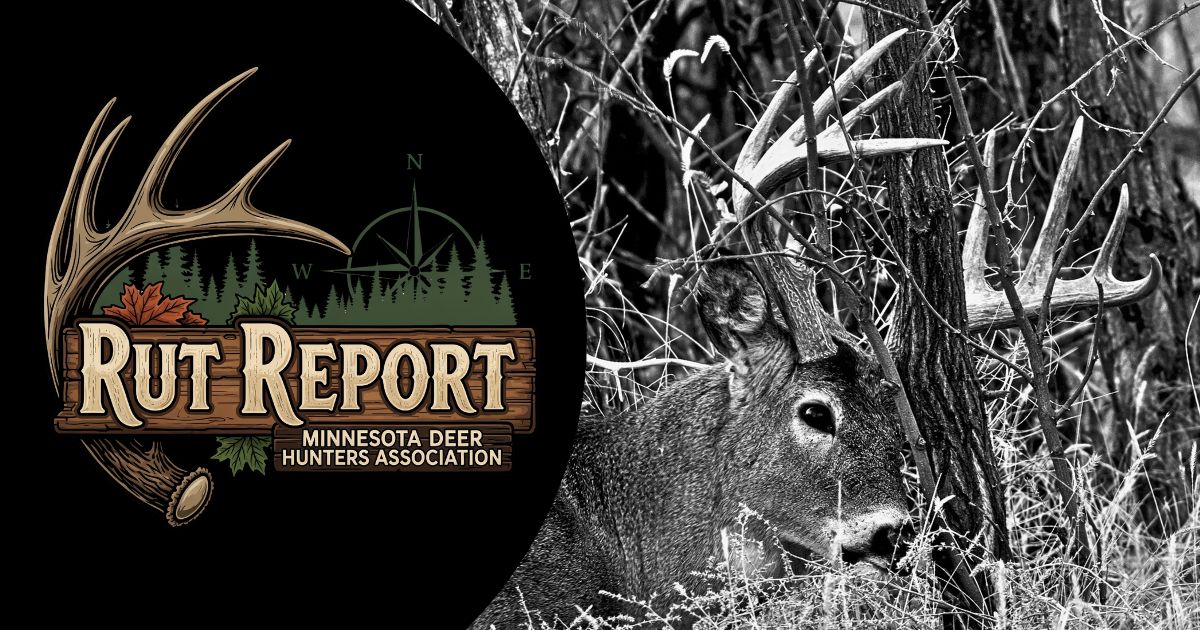
- MDHA Admin
- From Whitetales
- Hits: 5253
3 Winter Habitat Projects to Improve your Deer Hunting
- MDHA Admin
- From Whitetales
- Hits: 5253
The hunting season has come and gone. Maybe it went the way you were hoping, but for many of us, it may have been another hunting season that left us scratching our head wondering why we have to endure another meal of tag soup. If that’s you, you don’t have to let the next hunting season follow the same trend. The change can start this winter! Here are three easy-to-do habitat improvements that can have you punching your tag next fall.
1) Oak Tree Releasing
Any deer hunter that has spent any time in the woods knows just how desirable acorns are to deer. But are the oak trees on your land reaching their full acorn producing potential? Dr. Craig Harper, out of the University of Tennessee, conducted a 10-year study on acorn production in oaks. His research found that 40% of oak trees produce 70% of the acorns. Dr. Craig Harper wanted to research what the most effective way was to increase acorn production in these good acorn producing trees. Fertilization was utilized during that timeframe and no statistically significant increase was found in acorn production. But when the oak trees were released from crown competition with other trees, acorn production was significantly increased. This happens because the stem growth on each branch is no longer suppressed by nearby trees. Hence more stems equal more acorns. So, taking time this winter to walk your woods and cut down any competition around your good acorn producing oak trees can vastly increase the amount of hard mast available to your deer next fall.

2) Aspen Cutting
If you live in Minnesota, you are likely very familiar with the aspen tree. Aspen have a great deal of wildlife value when managed appropriately. One of the easiest ways to maximize aspen for wildlife is through logging. When you cut aspen, the new growth prolifically sprouts from the root system creating excellent forage and cover for deer, often within one growing season. If you don’t have enough aspen to log on your property, creating small clear cuts with a chainsaw can produce great results. If you do cut them yourself, make sure you cut trails through the downed aspen so the deer are able to navigate through the area easily. If you don’t take the time to cut trails through the downed aspen, the deer will only utilize the edges of these areas so make sure you take this critical step.

3) Edge-Feathering
Here is yet another winter habitat improvement project involving a chainsaw. Edge-feathering is simply flush cutting or hinge-cutting (cutting a little over halfway through a tree and tipping it over so the top stays alive) trees along the edge of the woods to provide screening cover and food for deer. This is often done to help screen off food plots or hunter access areas. I like to cut the trees perpendicular to the area I’m screening given the trees on the edge of the woods are often leaning that direction and it also allows more space for other trees and herbaceous plants to grow up through and between the downed trees, essentially extending your woods. When you’re done, you’ve created an uneven edge to the woods that wildlife love. You’ll notice ample browse on the downed trees, especially in the winter when woody browse is essential for deer survival. Edge-feathering can also cause deer to bed closer to your food plots resulting in deer coming out on the food plots sooner given they have less distance to travel from bedding to food. Leaving strategic openings in the downed trees near stand locations can help guide and direct deer movement in a way that gives you a better opportunity for a bow shot or closer shot with the gun. Edge-feathering is one of my favorite habitat improvement projects because it’s easy to do and you can transform a lot of ground quickly given there isn’t a lot of detail and clean-up work needed, you’re simple dropping trees.
There is a reason I like to focus on projects that involve a chainsaw in the winter. The late winter into the early spring is one of the most stressful times for a deer to be alive. Often at this point, any residual ag food sources have been depleted and often the native food sources are dwindling as well. In our part of the country, up to 80% of a deer’s diet is woody browse during this time. When you focus on projects that bring the woody browse down to their level you are providing the best supplemental food source possible for deer during their highest stress period of the year. Last winter I made a point to do work in the timber about every 10 days. The deer absolutely crushed the browse I brought down to their level given how stressful the winter was. I only found one dead fawn on our 270-acre farm. I know of other landowners in our area that had well over a dozen dead deer on their land after the snow melted. So, if you have time, bust out the chainsaw and start working to improve the habitat on your land this winter. Not only will you be helping your hunting next fall, you’ll also be providing the deer with a crucial food source!

If you’d like to learn more and follow along with me on my habitat journey you can follow me on Facebook and YouTube at “Purpose-Filled Habitat Management.”









